Sanity Project
Overview
What follows is an account of our Sanity Project, succinctly named by my wife Rachel. The project is a redesign of our backyard with the ultimate goal of turning it into a healthy ecosystem – a sort of trans-species collaboration. Nearly all of the world’s many problems are outside of our control, but this is one thing we can do.
We have two reasons for calling it the Sanity Project. First, it is a way for us to build something beautiful and meaningful while the world … does whatever it is doing. Second, sanity derives from the Latin sanitas meaning “healthy” and “sound.” Based on this etymology, therefore, I’m going to say “overall health” is a legitimate usage of the word. Our Sanity Project aims at the overall health of all the beings on our 0.14 acre city lot.
Background
I have made halfhearted attempts at gardening in the past but this is the first attempt that has stuck. As I recall, this attempt began when I built two raised beds and filled them with garden soil shortly before I had emergency gall bladder surgery in March 2020 – the week before COVID lockdown officially began. After recovering from surgery I planted the beds with vegetables and some orange butterfly weed.
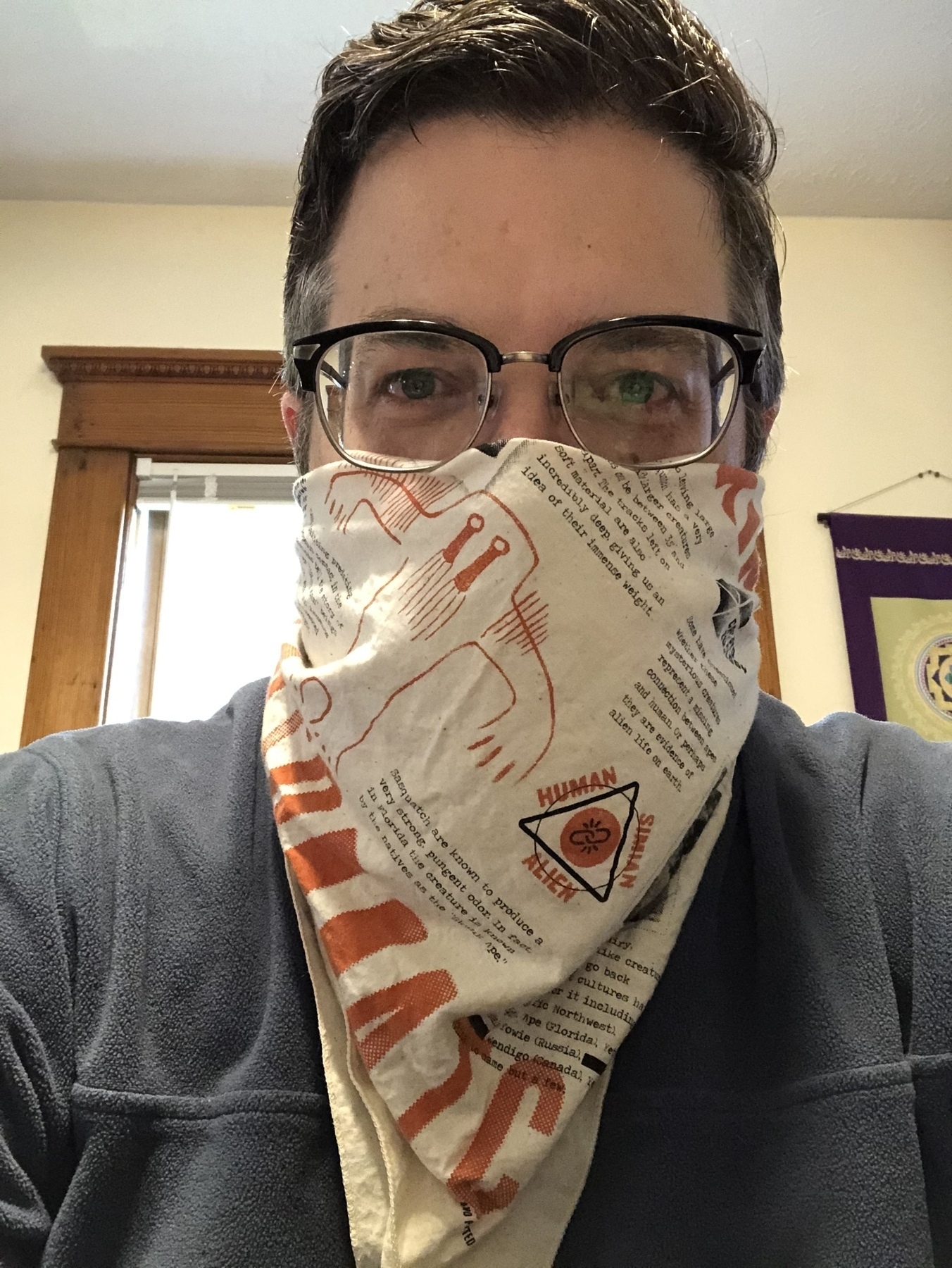
Like many others, I experienced the pandemic as both anxiety-ridden and a window into another way of working. Once the lockdowns began in March 2020, I started working from home — and, as of August 2022, that will continue into the foreseeable future. For me, this working arrangement has been an unmitigated good, centering my entire life here at home. This project would have certainly been different if it had not been for remote work.
At that point in 2020, my gardening motivations were more vague than they are now. I had just a few months before finished reading Richard Powers’ novel The Overstory and it is not an exaggeration to say it changed my life. I’ll risk sounding slightly crazy by saying the trees called to me through the book. There’s more to the story of how that unfolded in my life but for now it will suffice to say that I turned toward the more-than-human world in a way I had never done before. Building those raised beds was one of the ways that turn took physical form.

We also got some chickens in 2020, though that experiment only lasted until the Fall due to space and overwintering concerns. Those chickens are now living on a friend of a friend’s farm.
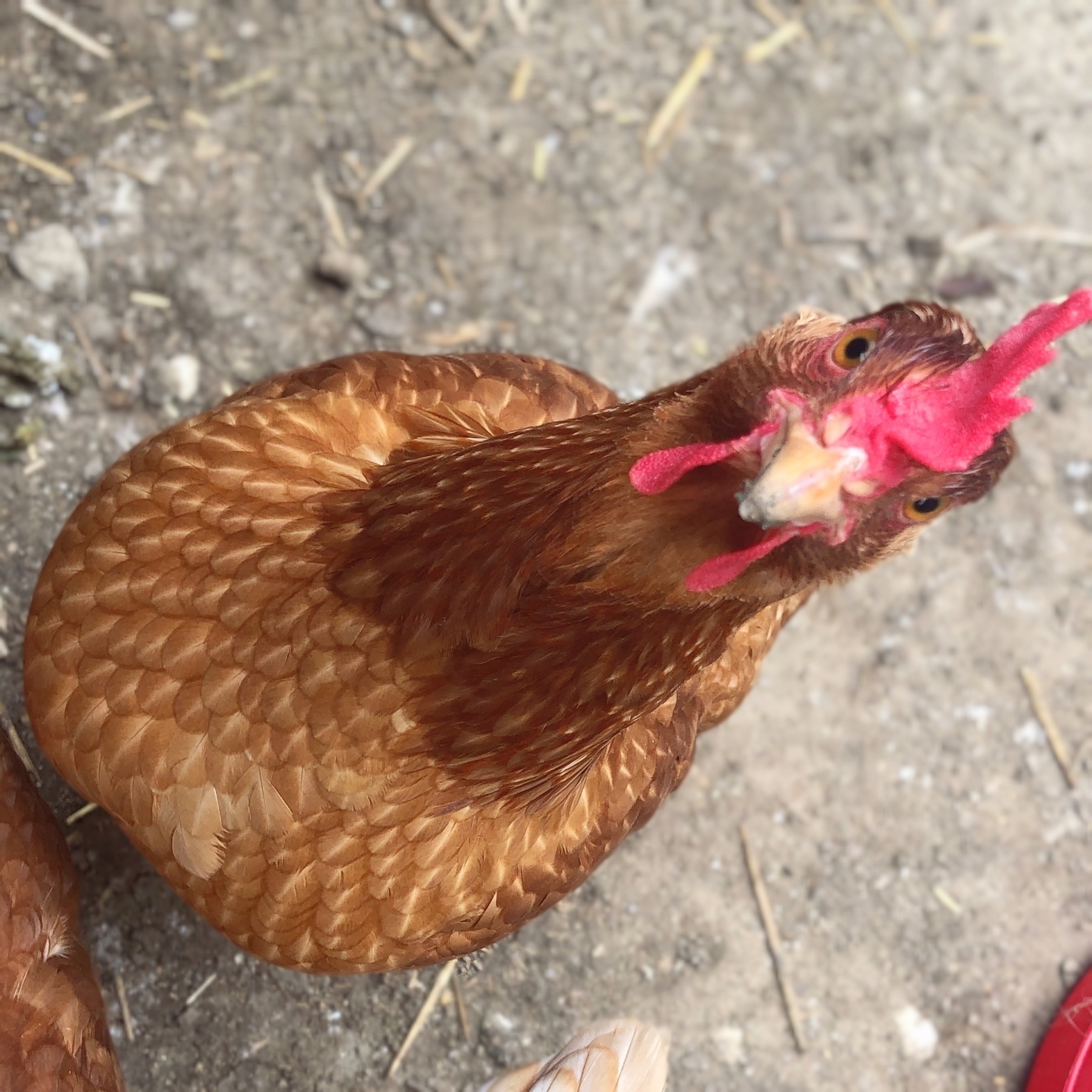
In 2021, I started thinking more in terms of planting for pollinators. While I still had a few vegetables and herbs, the raised beds were mostly full of native perennials: swamp milkweed, orange butterfly weed, hairy woodmint, purple poppy mallow, New England aster.
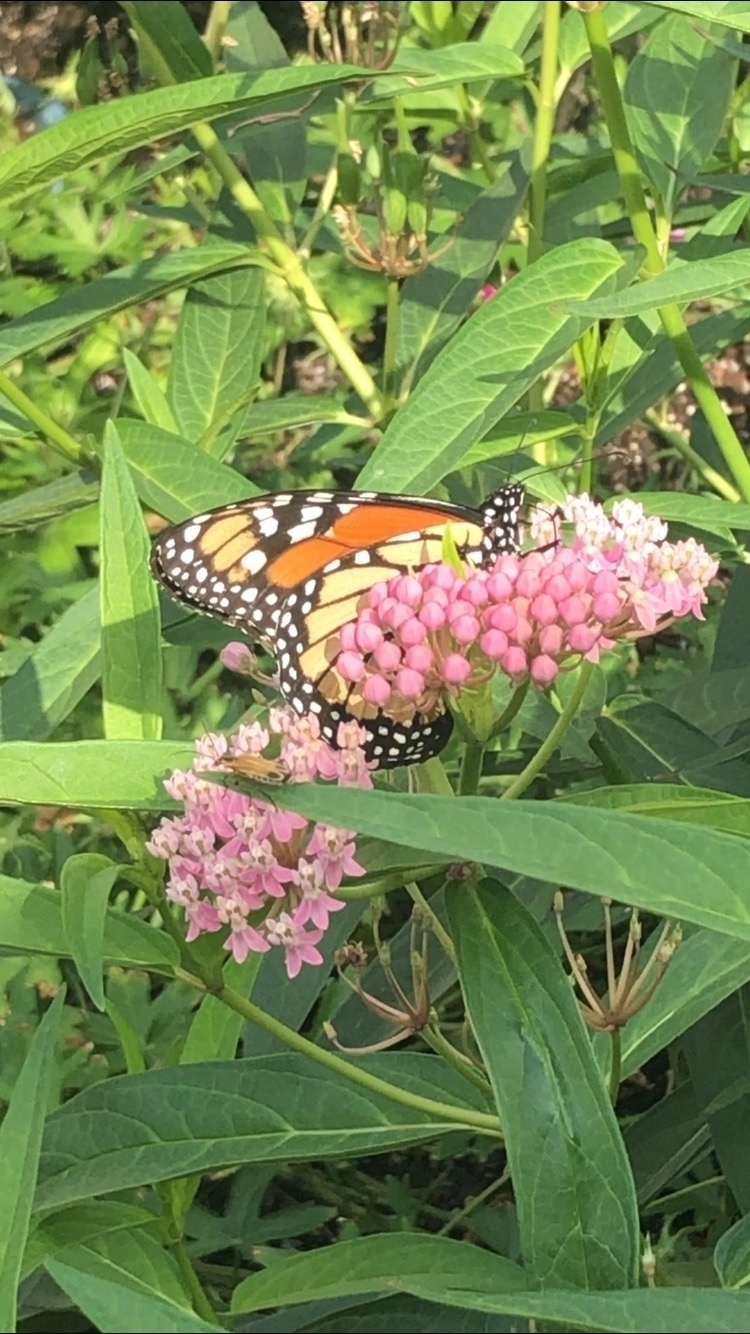
2022: The Year of the Grotto
Up to this point, Rachel was not really involved and — let’s be honest — I wasn’t doing a great job of it. And it wasn’t even really a project yet. It was me, two raised beds, and a few scattered ideas.
I said above that remote work has been an unmitigated good for me. That’s true. It’s also true that 2020-2021 were two rough years. Our little town was drawn into the battles of those years just like everywhere else — and we were continually frustrated and angry by the behavior of the majority in our town. We, frankly, wanted out. But several obstacles made moving away impossible in the short term.
We had to find a way to live with less anger. We began to unplug. Less news, less social media. I started thinking about silence and individualism and analog technology. I started questioning activism as the model for political engagement (1, 2). Faced with the monumental awfulness of the world, Rachel and I began thinking about what small, local good we could do.
Then along came a presentation by Doug Tallamy. Rachel became a believer in planting for pollinators and we started making plans. One thing I know from twenty-plus years of experience: when Rachel gets involved in something, everything gets much, much better.
The first thing Rachel did was to clean up the area (that I had been neglecting) around the raised beds, painted the back porch and raised beds, and put in several bird feeders. This alone made a huge difference.
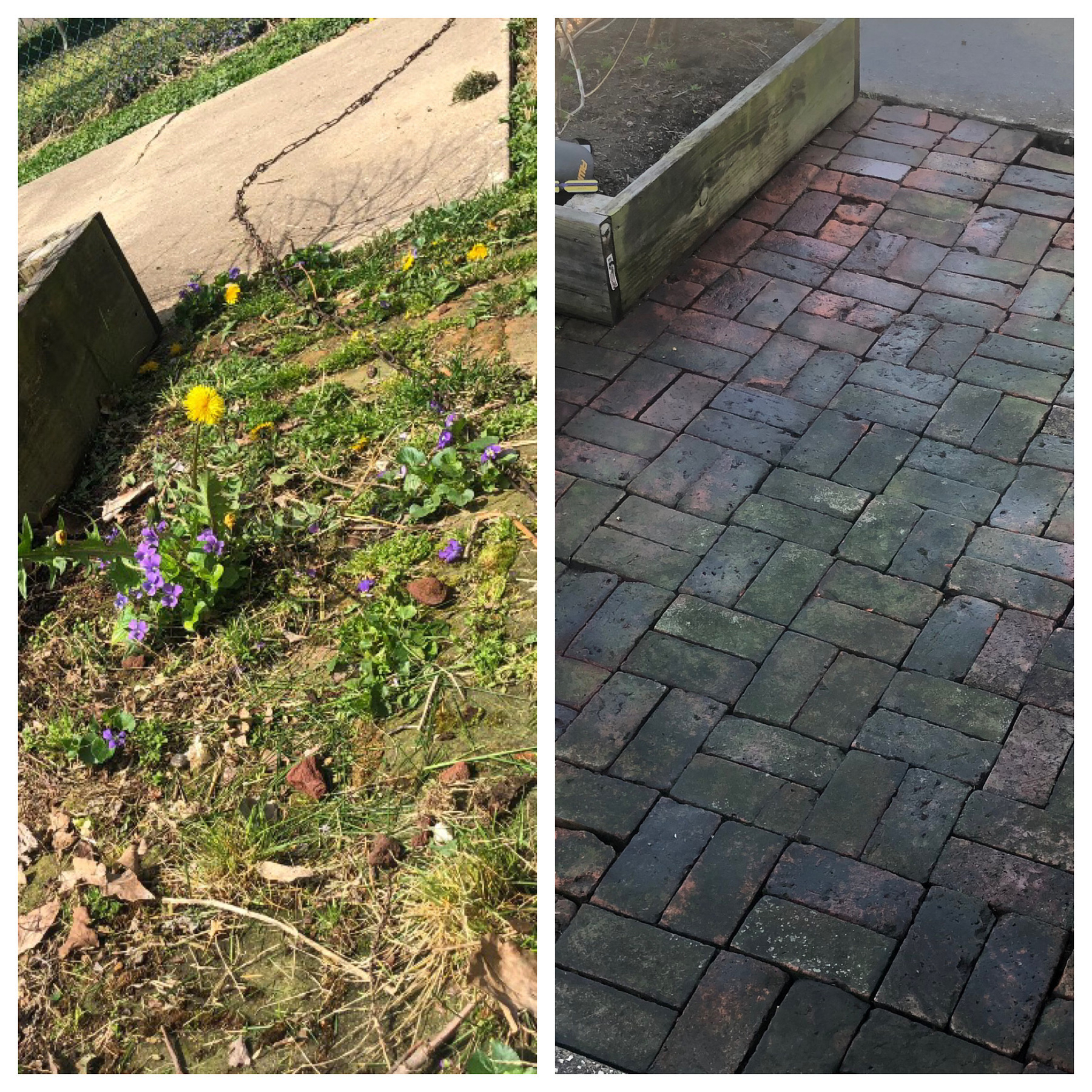

Next, we hired someone to cut out some shrubs and dig up landscaping rock in the areas we wanted to plant. Once that was done and the weather warmed up, we planted an area of our backyard bounded by a privacy fence on two sides and the back wall of our garage on the third. This notch was where our chickens had previously lived. We planted switchgrass, orange butterfly weed, joe pye weed, purple coneflower, and sunflowers. We called it Green Man’s Grotto.
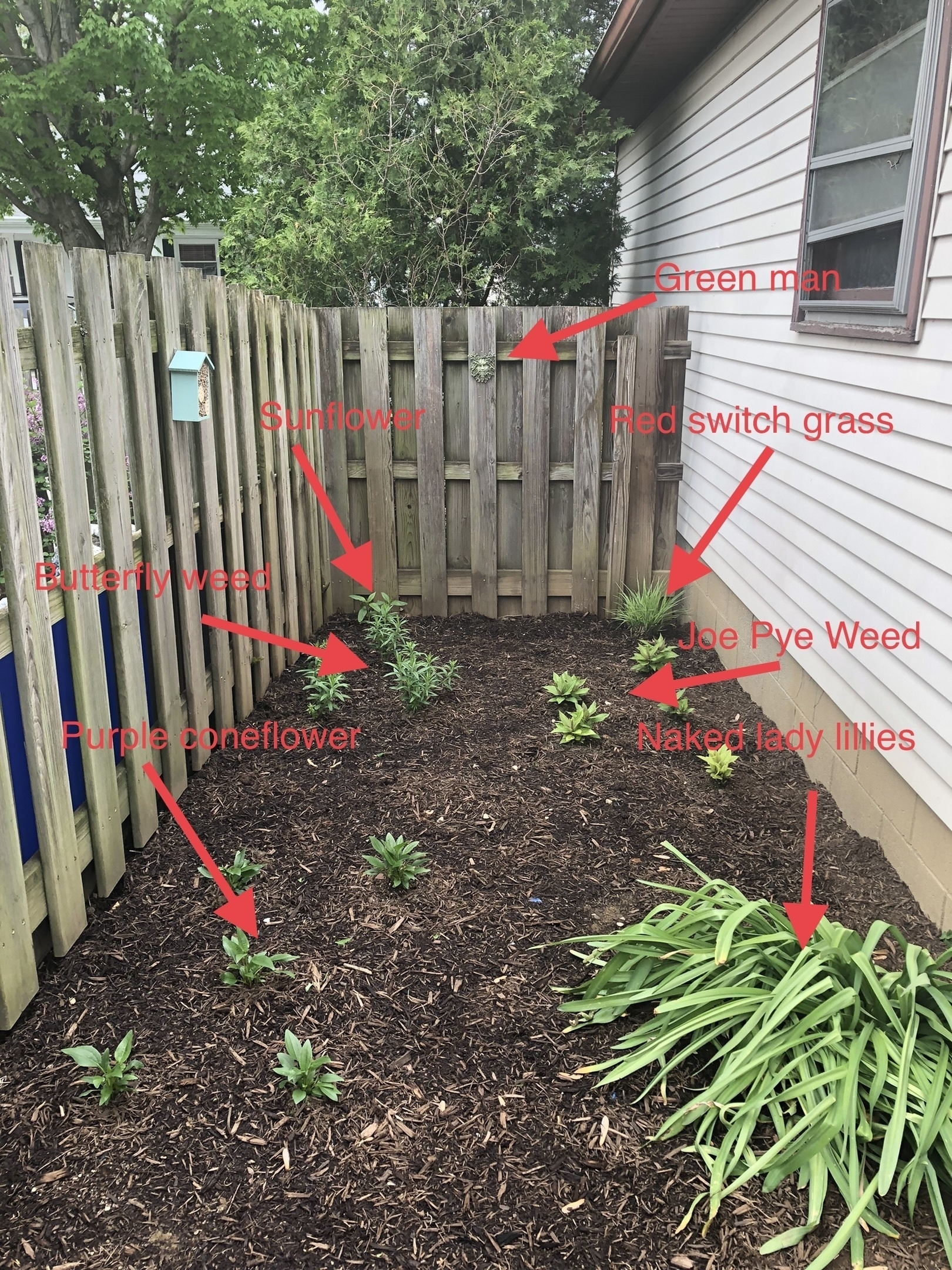
Now it felt like we were making serious efforts toward increasing relatedness on our city lot. We started composting, and then vermicomposting. Then Rachel began reading Planting for Wildlife by Jane Moore and the idea for the culminating act of the project so far took shape in her head: we built a pond.
We decided to take advantage of a large concrete block that sits at the corner of our garage (maybe the previous owner used it as a platform for planters?) and use it as the base for the fountain. And with its proximity to Green Man’s Grotto, it made sense to extend that area out around the new pond. So we watched some videos and started digging.

The pond’s diameter is four feet, with a one foot wide shelf at one foot deep and then the deepest point at two feet deep. So a small pond, but it’s had a large impact. We built a fountain out of an old butter churn that came with the house and then filled the pond with blue flag iris, water lettuce, cattails, water lilies, water hyacinth, and six bullfrog tadpoles.
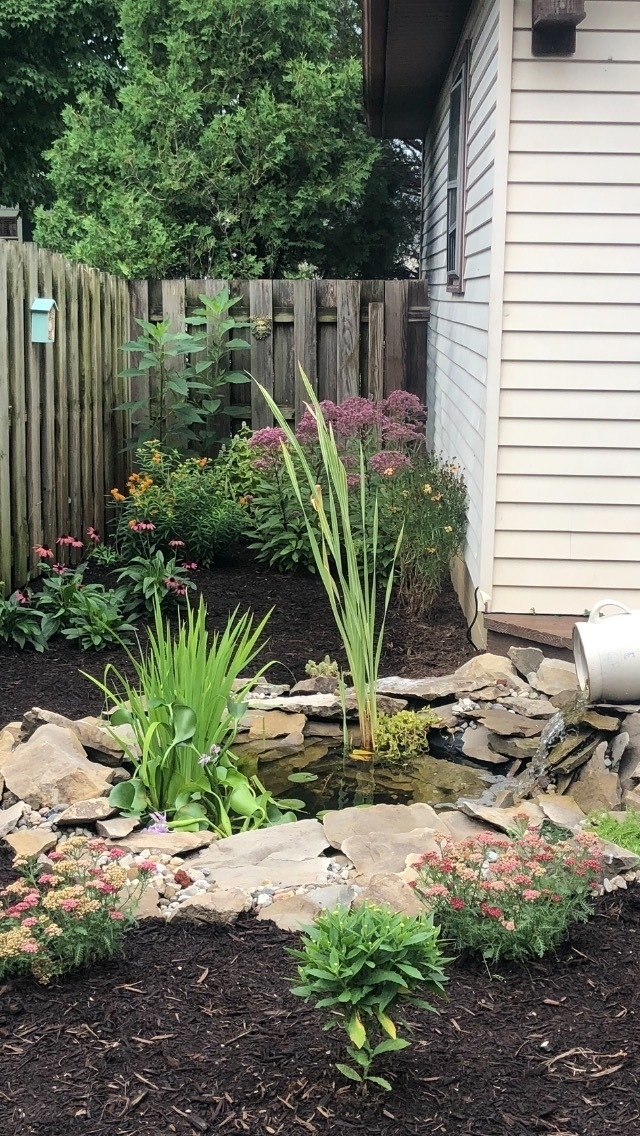

We’ve heard many people say that a pond is the best thing you can do for wildlife in your garden and we have found that to be true. And the change happens quickly! A frog found our pond almost immediately and began nightly croaking.
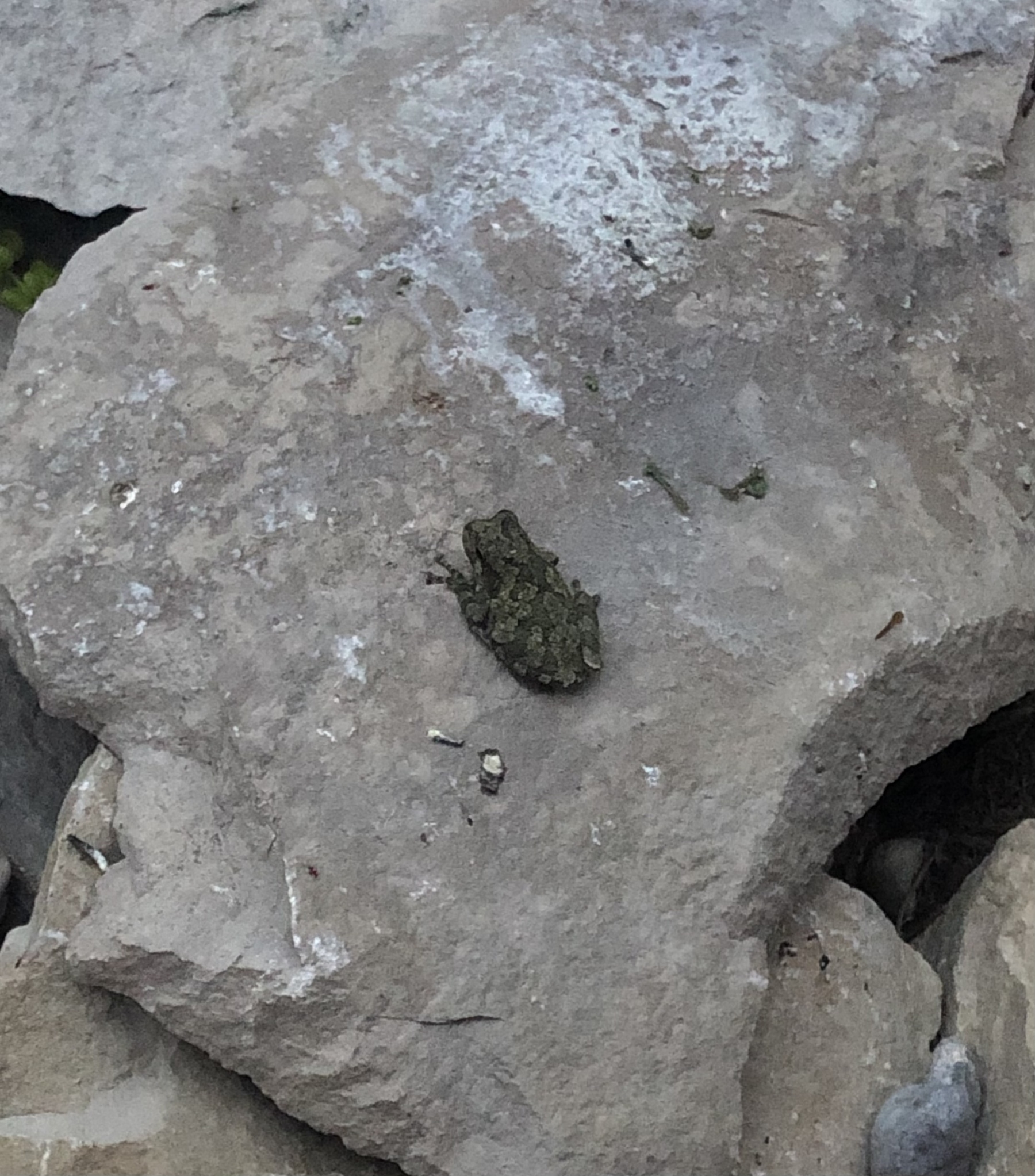
We could hear others nearby. Within a month, there were three generations of “wild” tadpoles. Water beetles and tiny aquatic snails showed up. Now we have what we think are dragonfly larvae. The Green Man appears to be pleased.
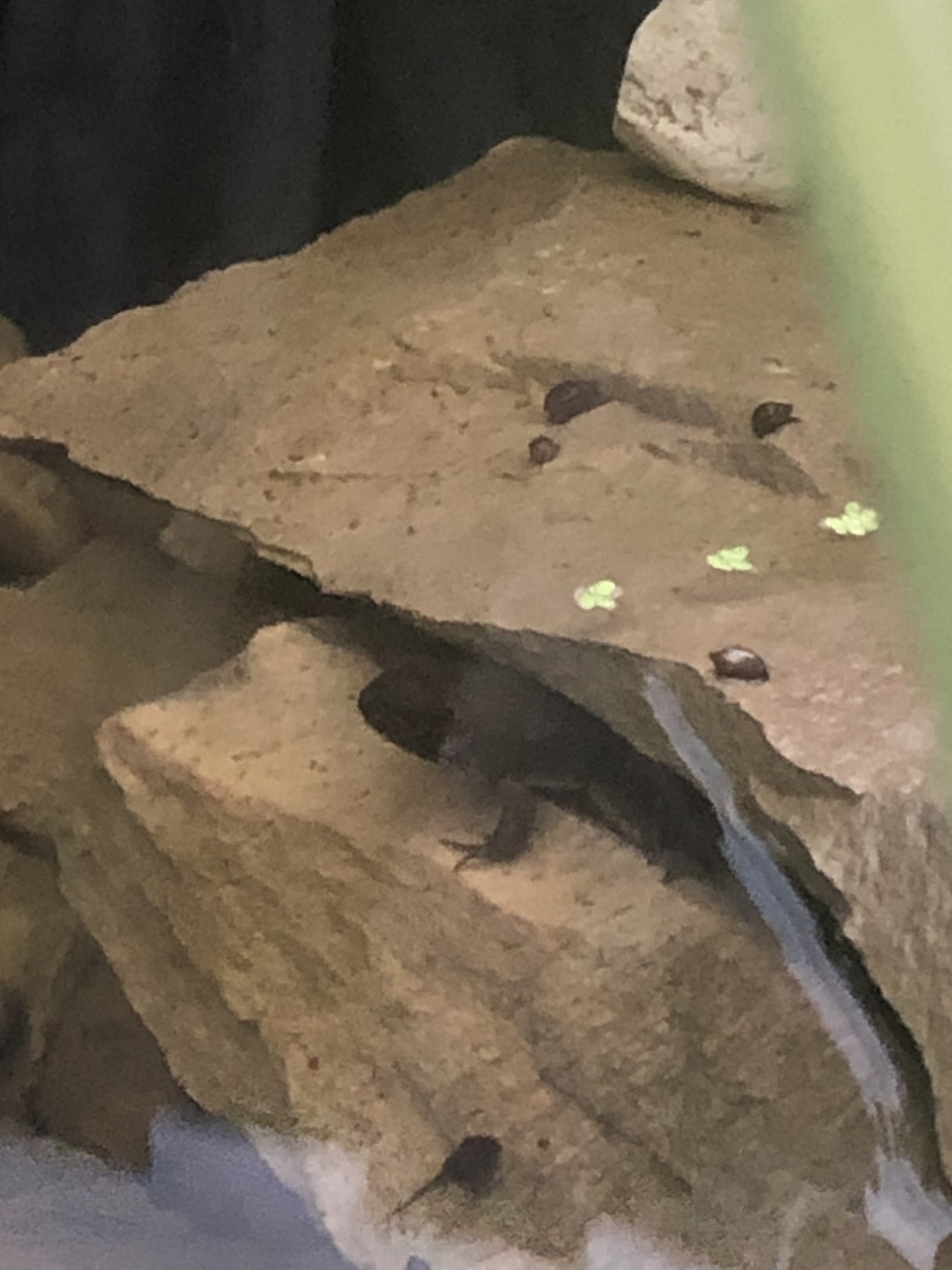
We used the dirt from the pond excavation to build a new raised bed on the back deck. We used scrap pond liner at the bottom of the raised bed to prevent water passing through and damaging the deck. We’ll see how that experiment goes. We’ve filled that bed with what we hope will be a fall garden of greens and herbs.

At the end of September, we transplanted all of the plants that were in the original two raised beds into other parts of the backyard. We then doubled the depth of those raised beds from 10" to 20". We also started saving seeds for the first time.
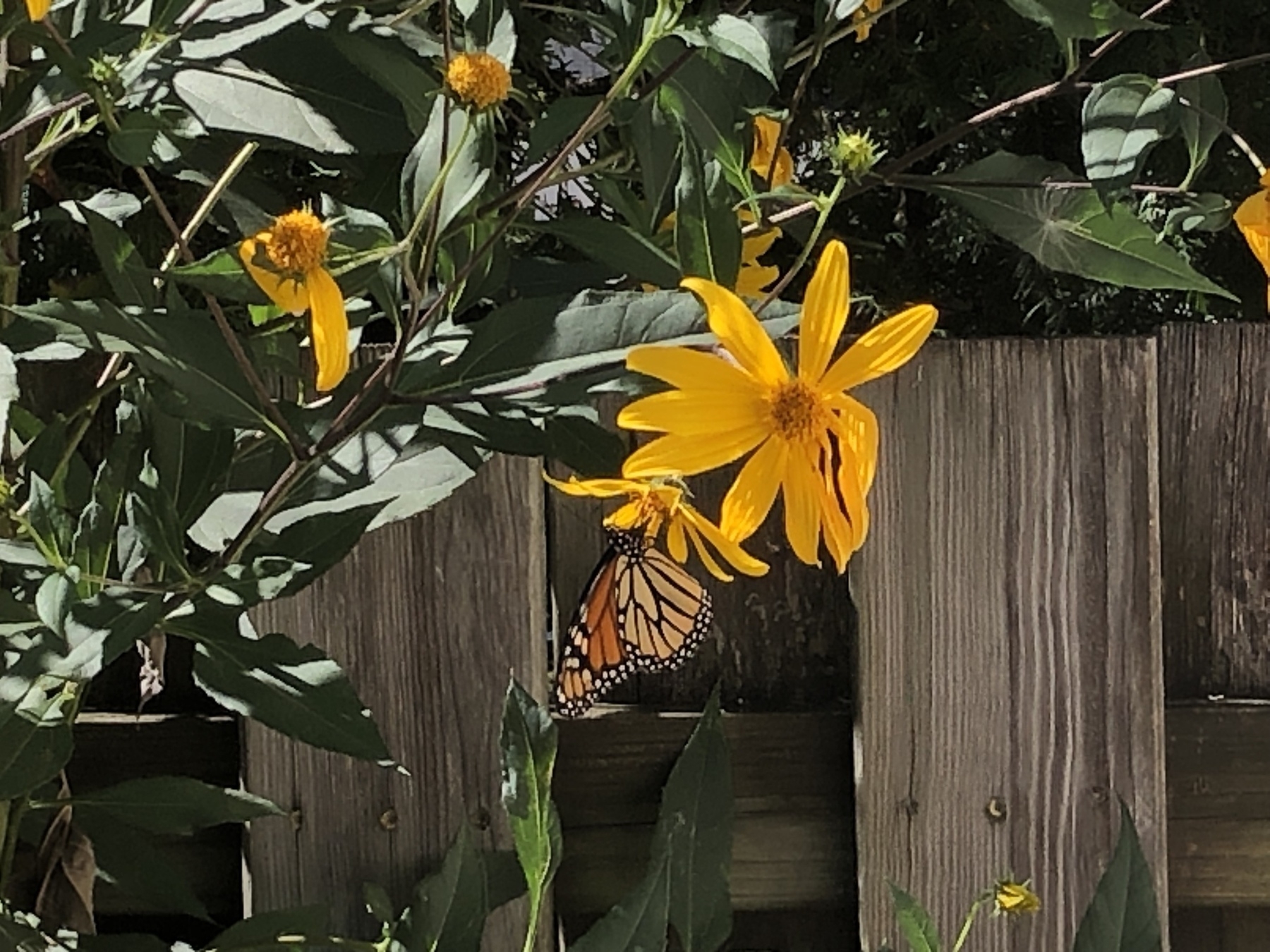
We built a grape arbor in October, with plans to buy concord grape vines from a local greenhouse in the spring.

As you can see in the picture above, we also settled on what would prove to be a good method for expanding planting areas: killing the grass by raking all our leaves (and even borrowing some from neighbors!) onto areas we want to plant the next spring.
The winter of 2022-2023 was Rachel’s first time trying to grow from seeds–both what we had saved and what we purchased. This turned out to be a lot harder than we expected. It didn’t help that we got a little impatient and started the seeds a bit too early in the winter.
2023 Update
It was another year of expansion. We:
- built a window box
- added a weirdly shaped raised bed between our driveway and the neighbor’s fence
- created an entryway to the backyard using the exising privacy fence, complete with flowers and a handmade sign
- removed a built-in bench from our back porch and inserted a built-in garden bed
These were all filled with plants, of course–both pollinator-focused plants and plants to feed us humans, body and soul. We planted the concord grapes around the grape arbor, along with some native honeysuckle.
Gardening, we came to find out, is mostly experimentation. Over the course of the year (and all the time to come), we learned where the plants wanted to grow and where they didn’t. We had some volunteer sunflowers from all the bird seed–and we learned that we absolutely love sunflowers. We had way too many zucchinis. We’re still eating frozen zucchini bread, here in early summer 2024.
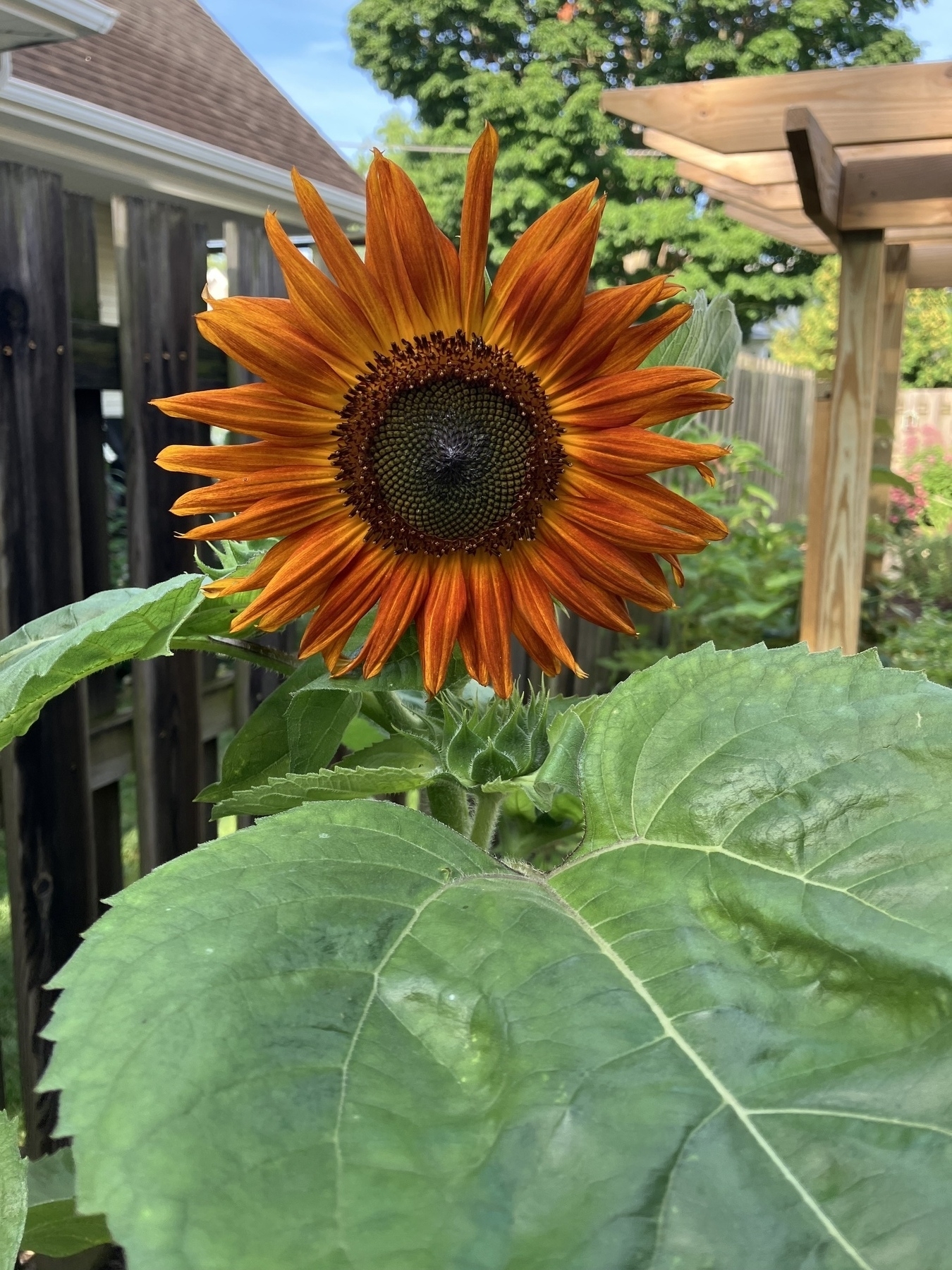

In September, we found out why there had been so many dead birds in the pond over the summer: the bullfrog in the pond (henceforward known as “Nessie”) was dragging them under but wasn’t big enough to eat them.
In the fall, we raked all the leaves into the north side of the backyard. This was an area where our dog did his business for years, so we found that it was pretty fertile. (RIP, Murphy.)
Rachel began clearing out all the ornamental plantings that were along the south side of the house in late fall but then we completed the project together in Febuary 2024. We thought about hiring someone to do this for us, but we’re getting cheaper the older we get so we decided to do it ourselves. We ended up digging out and moving 2,280 pounds of rock.

Over the winter of 2023-2024, Rachel greatly expanded her seed-saving and growing from seeds. The grow lights moved out of a scary corner of the basement into the living room and kitchen. Again, lots of experimentation. Some successes, some failures.
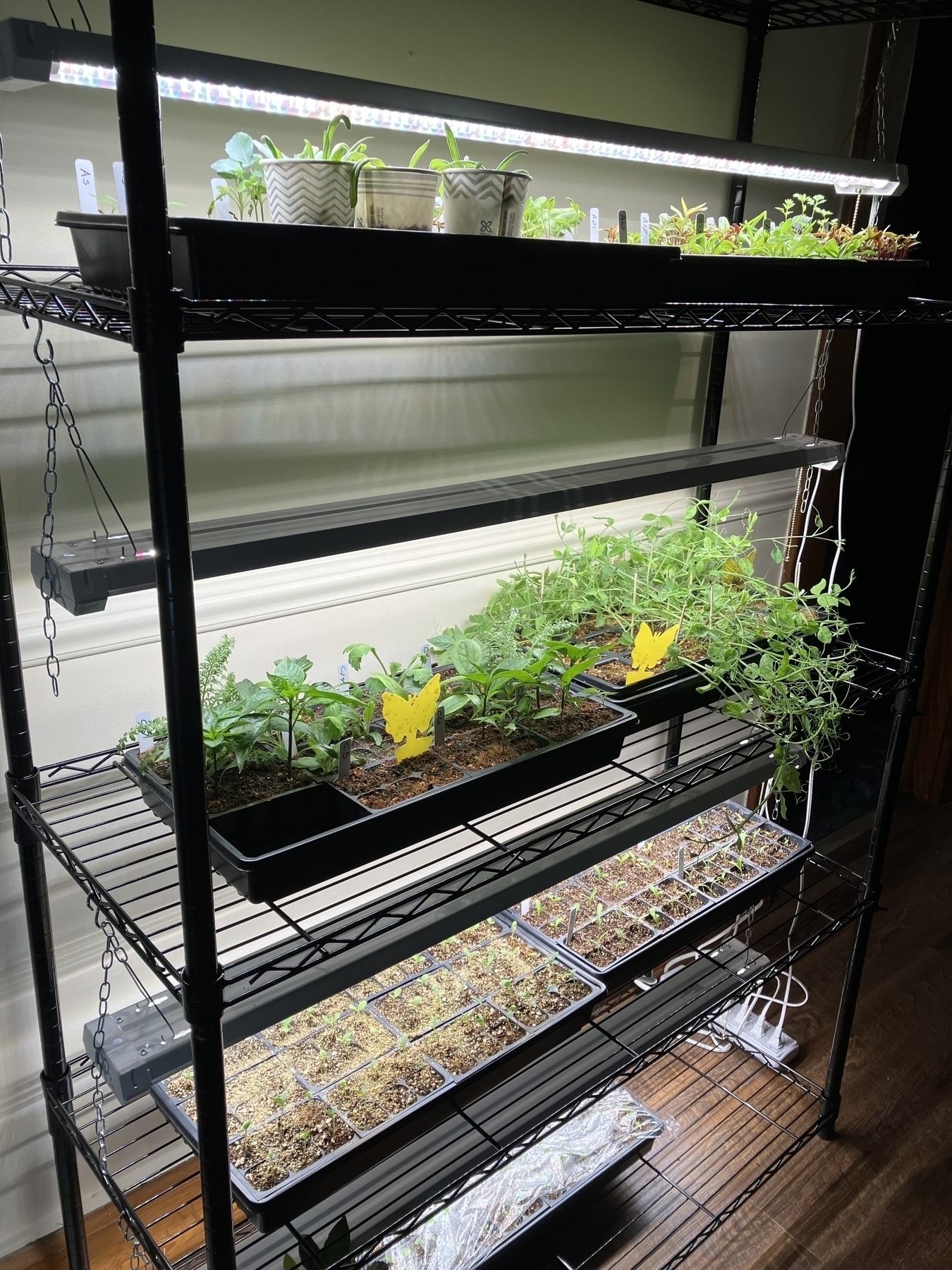
Future plans
It’s early summer 2024 at the time of this update. The growing season is well underway. Rachel spent the spring battling slugs. We planted strawberries and a gooseberry plant. But all of that will have to wait for the next big update.
We plan to tear out the dead ornamental bushes in our front yard this fall. We don’t know what we’ll put in their place yet. It will be a challenging spot, as it only gets about four hours of morning sunlight. We also plan to extend the plantings at the entrance to the backyard all the way up to the front yard. Once that is done, then the entire backyard and the south side yard will be free of grass, except for a little spot in the back where the bird feeders and a bench sit.
The ultimate goal is to fully encircle the house with a thriving ring of life, with barely any grass remaining. The north side will be challenging also, given its shadiness. Maybe some mushrooms? Barring anything unforeseen, we might be able to have our entire property recaptured by the summer of 2026. At that point, it should be a mostly self-sustaining system of native perennials plus annuals from which we can gather seed.
In the summer of 2023, we gave away small amounts of produce on a table in our front yard. We’d like to continue doing that. Maybe even give away plants once we have everything established as we want. I don’t know if we’ll ever produce enough to have a reliable surplus, but if we do maybe we could sell at the farmer’s market. Who knows?
This page will be updated over time. I’ll post notifications of updates on my blog. You can also see occasional posts (usually pictures) related to this project in the gardening category of my blog.
